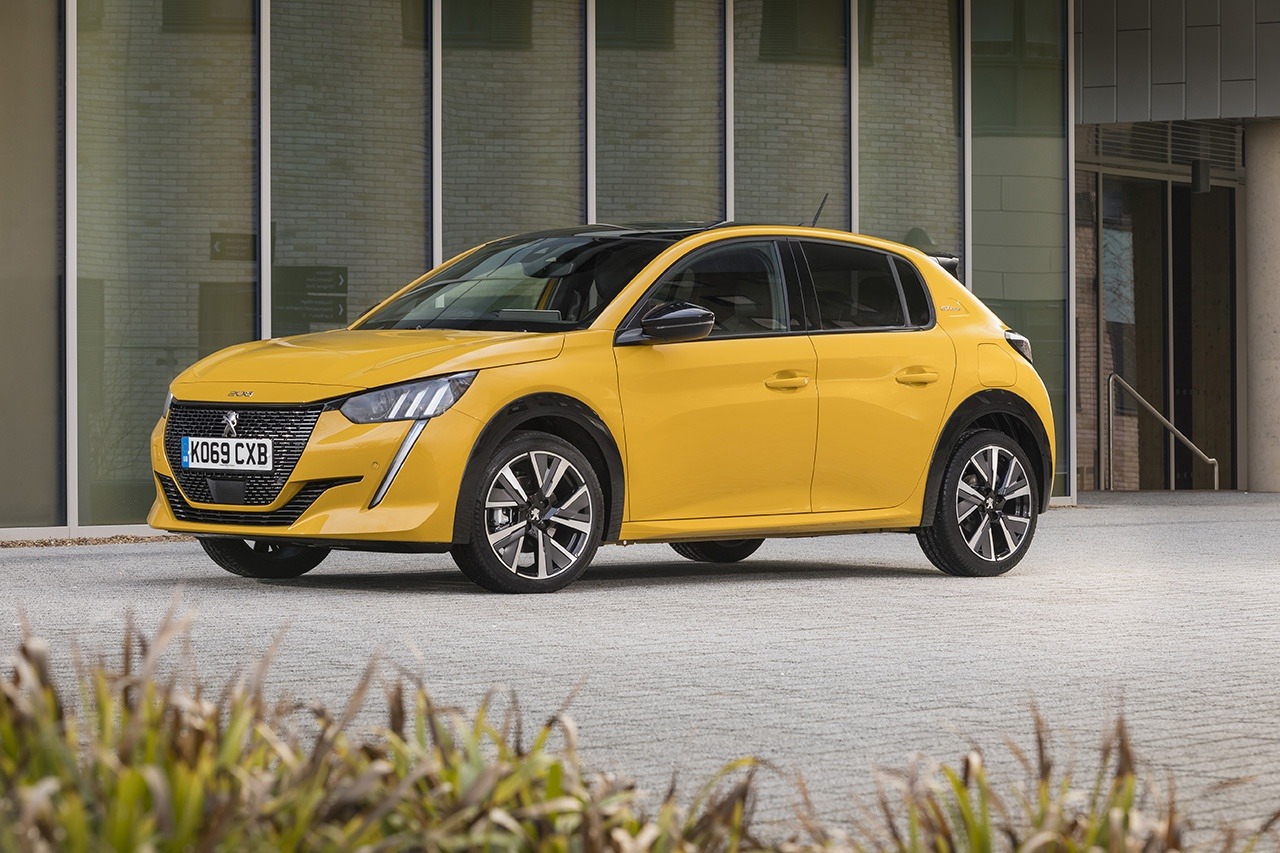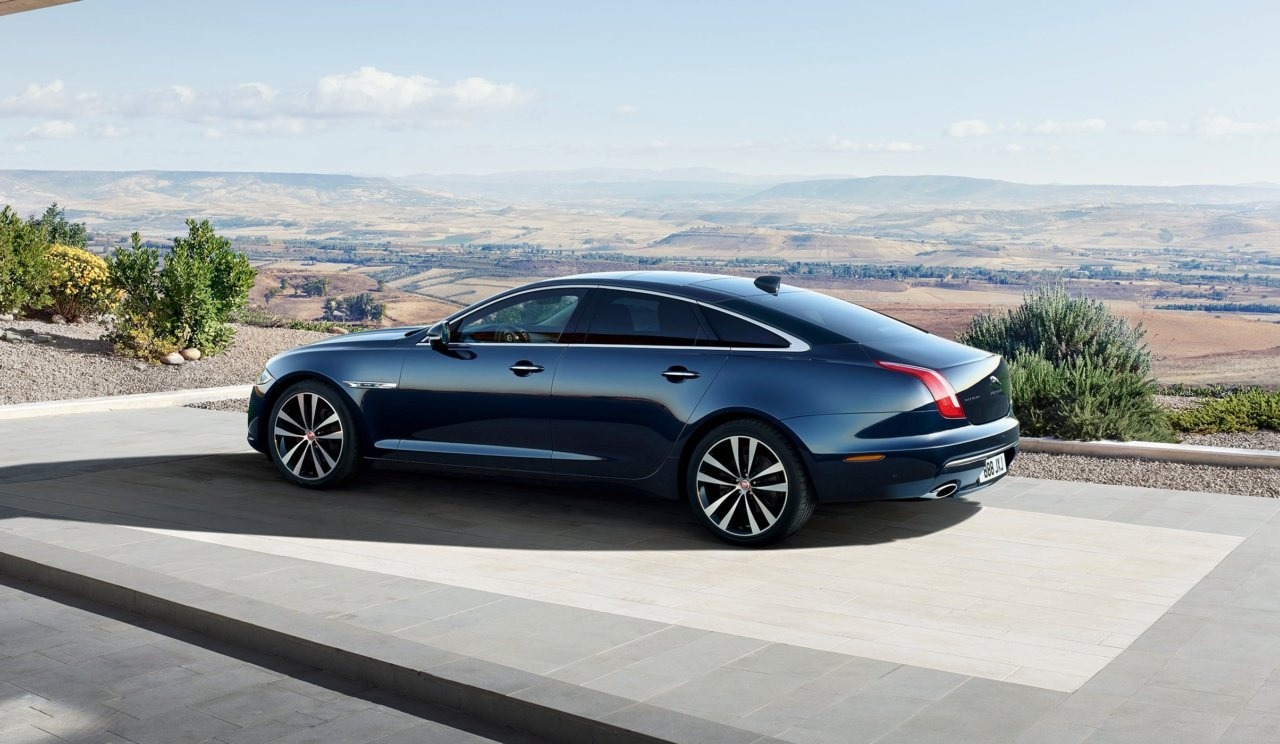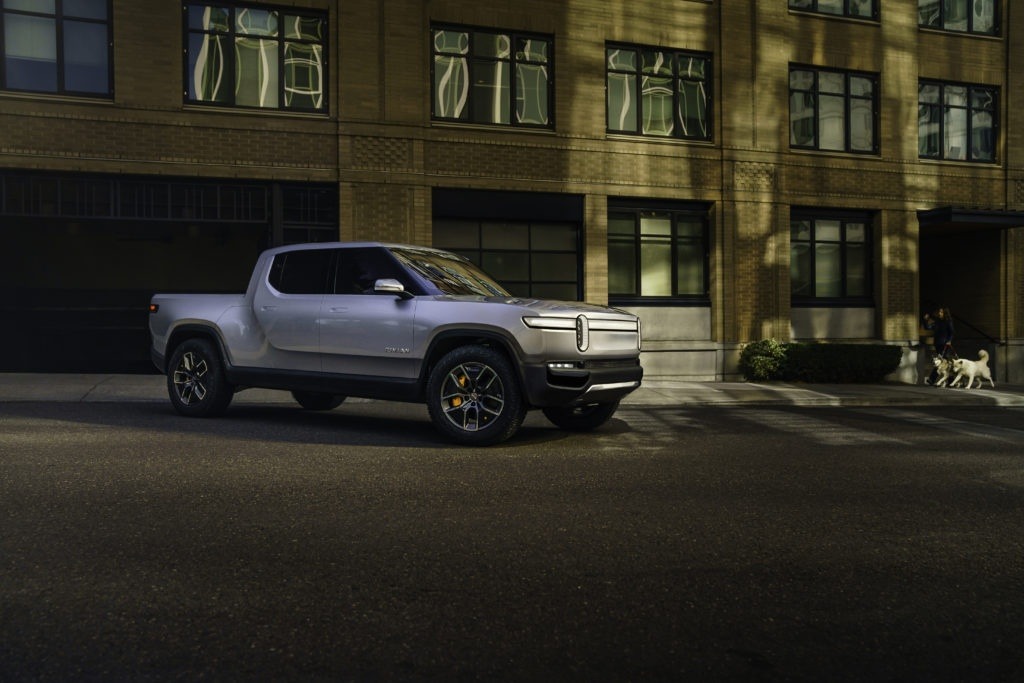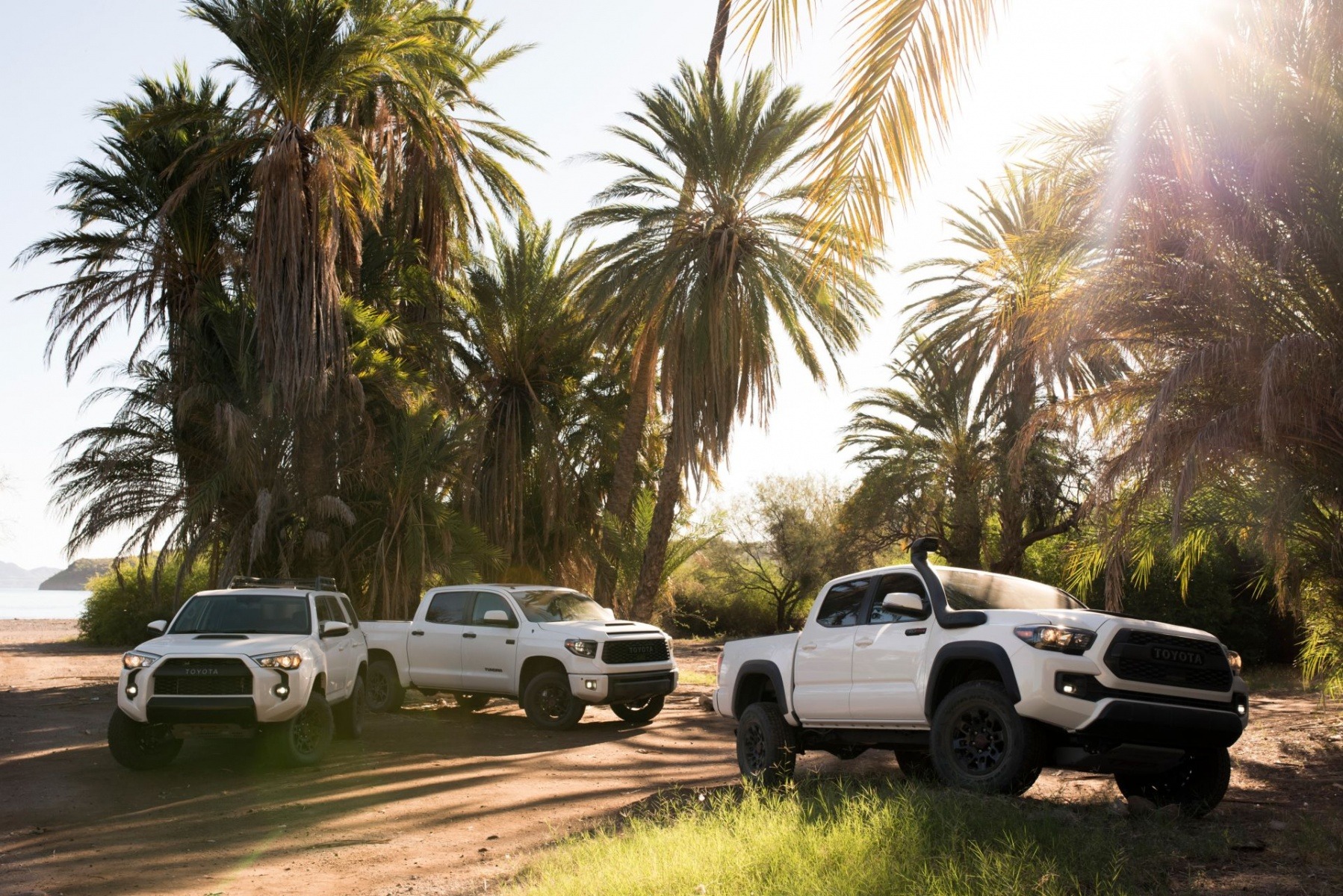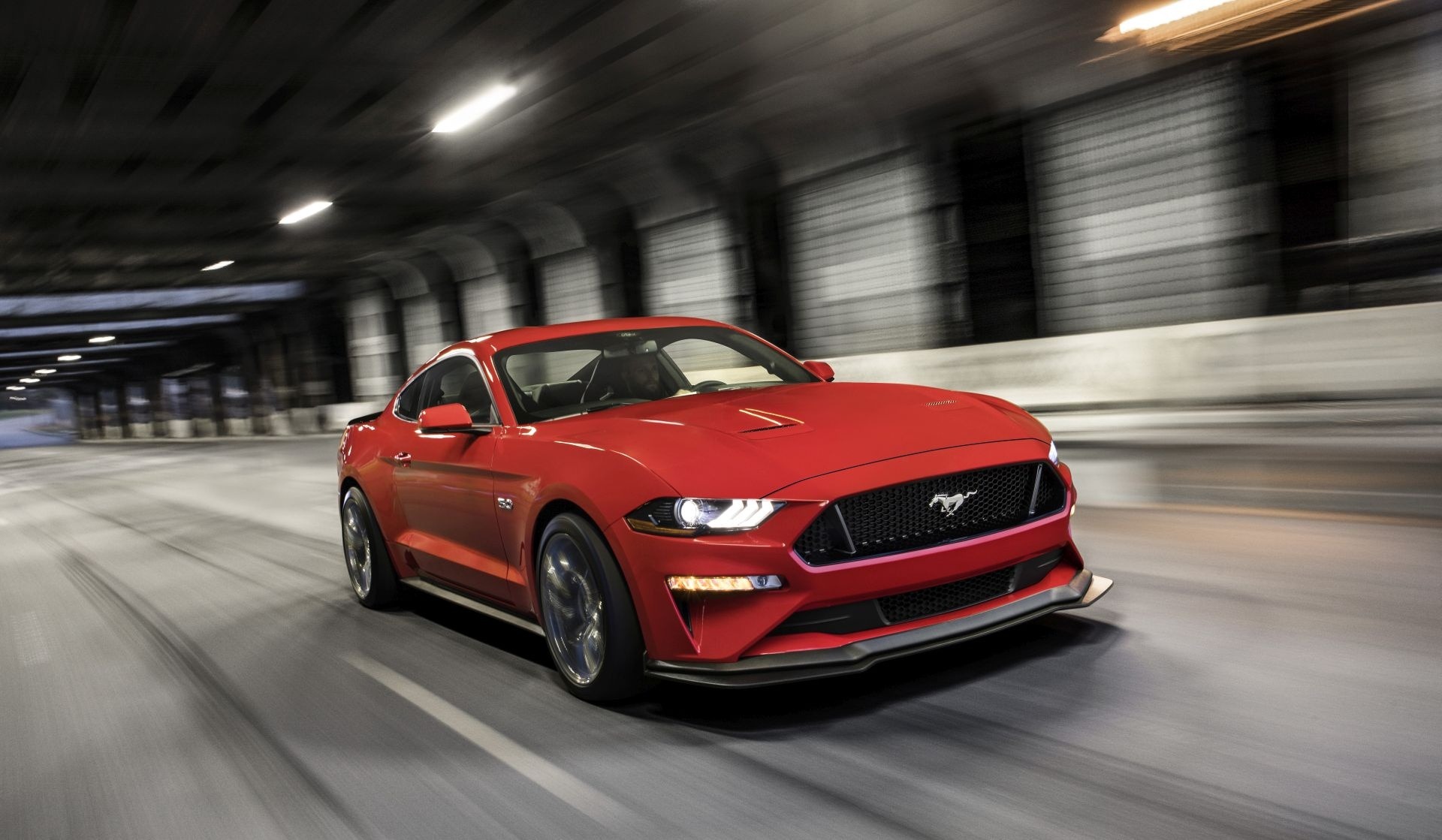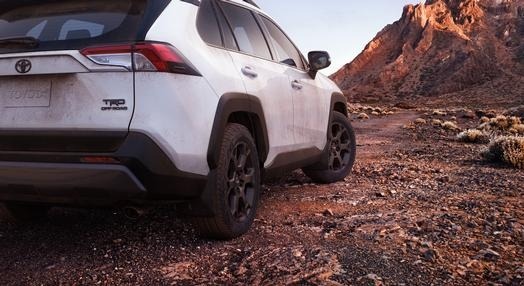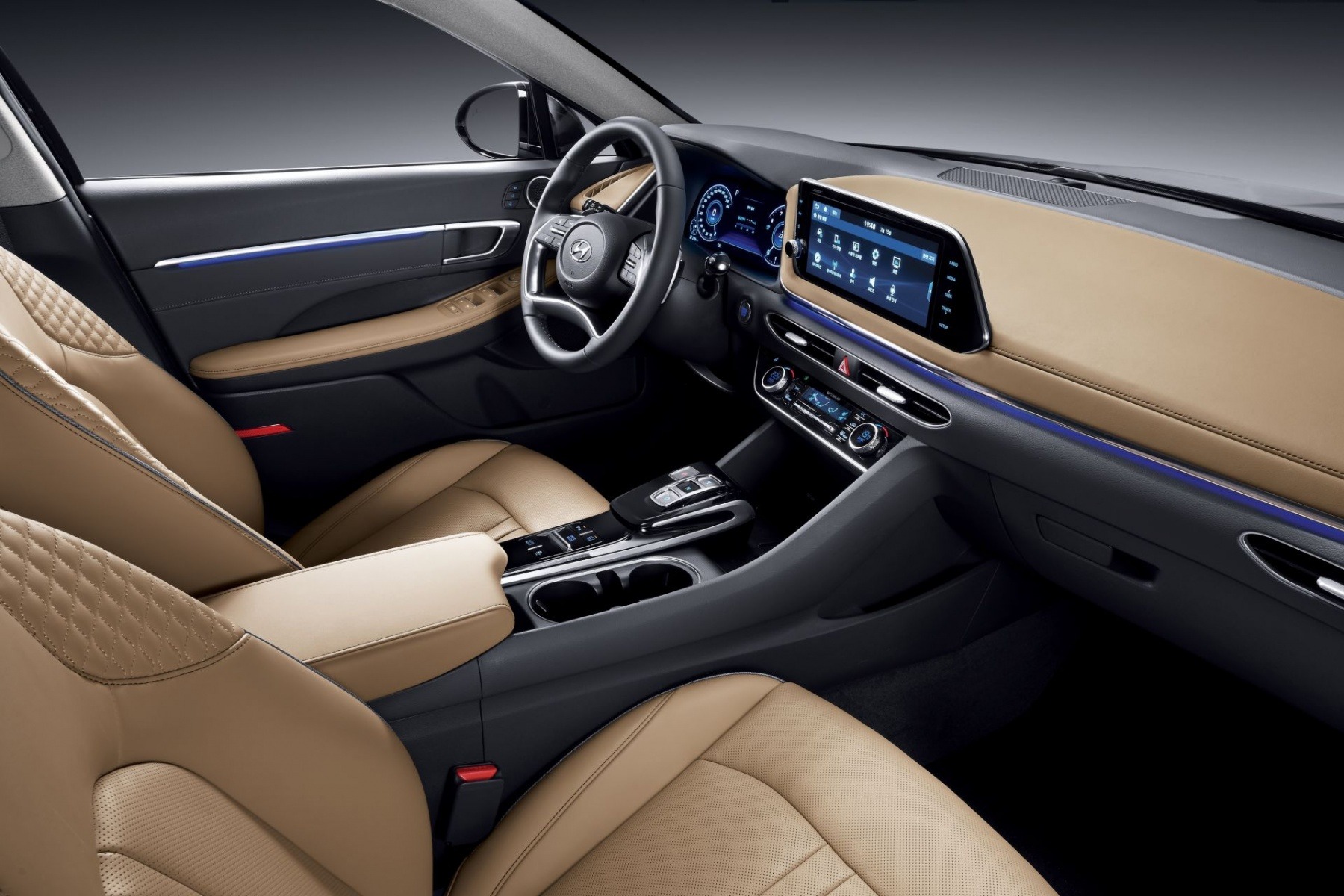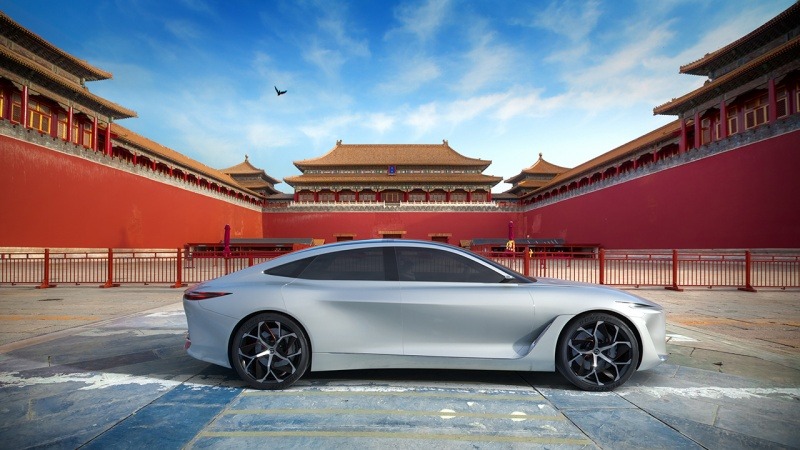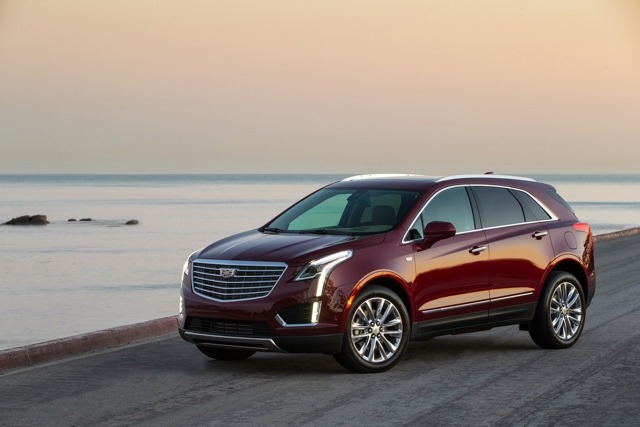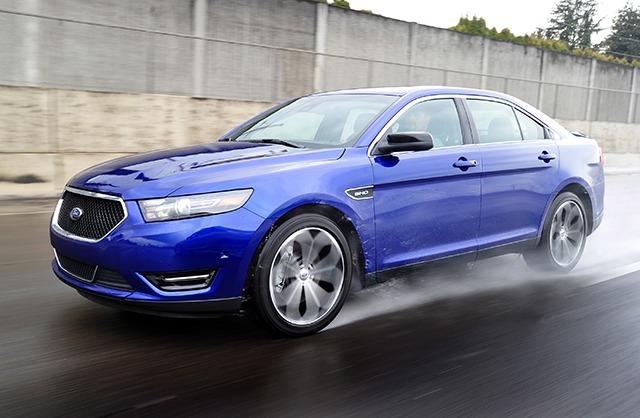Search the Community
Showing results for tags 'platform'.
-

FCA's Upcoming Small Cars To Switch To PSA Group Architecture
William Maley posted an article in Fiat
Future small cars from Fiat Chrysler Automobiles will not be using an updated version of their small car platform. Instead, they'll be underpinned by PSA Group's Common Modular Platform (CMP). Automotive News obtained a letter sent by FCA to suppliers in July stating "to immediately stop any research, development and tooling construction activities on future B-segment (small/subcompact) cars." These include the Fiat 500 and Jeep Renegade to give some context. The letter goes on to say it is moving to CMP and that vehicles based on this will be built at the company's Tychy, Poland plant - home to 500 and Lancia Yplilon production. FCA had already put a stop, albeit a temporary one on developing parts for the five new small cars that were destined to use this platform due to COVID-19. There will be one model that will move forward on this orphaned platform - the upcoming 500 electric for Europe. As for CMP, this underpins the Peugeot 208 and 2008; Opel/Vauxhall Corsa, Mokka; and the DS3 Crossback. It allows for both combustion and electric powertrains. Moving to CMP is another step towards FCA and PSA Group's merger to become Stellantis. It is unclear whether or not the U.S. will see any of the new models that will use CMP from FCA's brands. Source: Automotive News (Subscription Required) -
Future small cars from Fiat Chrysler Automobiles will not be using an updated version of their small car platform. Instead, they'll be underpinned by PSA Group's Common Modular Platform (CMP). Automotive News obtained a letter sent by FCA to suppliers in July stating "to immediately stop any research, development and tooling construction activities on future B-segment (small/subcompact) cars." These include the Fiat 500 and Jeep Renegade to give some context. The letter goes on to say it is moving to CMP and that vehicles based on this will be built at the company's Tychy, Poland plant - home to 500 and Lancia Yplilon production. FCA had already put a stop, albeit a temporary one on developing parts for the five new small cars that were destined to use this platform due to COVID-19. There will be one model that will move forward on this orphaned platform - the upcoming 500 electric for Europe. As for CMP, this underpins the Peugeot 208 and 2008; Opel/Vauxhall Corsa, Mokka; and the DS3 Crossback. It allows for both combustion and electric powertrains. Moving to CMP is another step towards FCA and PSA Group's merger to become Stellantis. It is unclear whether or not the U.S. will see any of the new models that will use CMP from FCA's brands. Source: Automotive News (Subscription Required) View full article
-
As we wrote late last month, the Jaguar XJ is about to use up one of its nine lives. The big cat gets euthanized next month without a direct replacement ready for market. However, we also told you that the cat will be back, possibly as an electric vehicle next time. At an investor meeting Jaguar confirmed that to be true. Jaguar is working on a new Modular Longitudinal Architecture (MLA) platform for use under the next XJ and for the next Range Rover. The flexible platform is capable of being used in electric, plug-in hybrid, or mild-hybrid configurations. It is also being designed to be very light weight, eventually to be used to replace all five of the platforms that Jaguar Land Rover uses. Jaguar Land Rover hopes to increase profits by reducing the number of architectures. Jaguar does plan to continue to develop the I-Pace platform which is unrelated to MLA. The XJ's direct replacement will launch first as a electric model with a predicted range of 292 miles using a 90.2 kWh battery. Later, 6-cylinder models (likely the new inline-6 recently shown in Range Rover) will become available. The 292 mile range in the XJ would rival the Tesla Model S and Porsche Taycan. For those who prefer a plug-in hybrid, the MLA platform will use a 13.1 kWh battery giving an estimated EV range of about 31 miles. Mild-Hybrid versions get a belt-alternator-starter setup to give a small electric boost at start. Also on the MLA platform will be the Range Rover and Range Rover Sport. Both names currently offer plug-in hybrid versions, but the new MLA platform could enable the Range Rover to be available in an all electric version. Land Rover has not yet confirmed this to be the case. The Range Rover would come first with the Sport following close behind in 2021. All of this comes in the background of huge job cuts at Jaguar after a record $4.6 billion loss.
- 2 comments
-
- 1
-

-
- electric vehicle
- ev
- (and 5 more)
-
As we wrote late last month, the Jaguar XJ is about to use up one of its nine lives. The big cat gets euthanized next month without a direct replacement ready for market. However, we also told you that the cat will be back, possibly as an electric vehicle next time. At an investor meeting Jaguar confirmed that to be true. Jaguar is working on a new Modular Longitudinal Architecture (MLA) platform for use under the next XJ and for the next Range Rover. The flexible platform is capable of being used in electric, plug-in hybrid, or mild-hybrid configurations. It is also being designed to be very light weight, eventually to be used to replace all five of the platforms that Jaguar Land Rover uses. Jaguar Land Rover hopes to increase profits by reducing the number of architectures. Jaguar does plan to continue to develop the I-Pace platform which is unrelated to MLA. The XJ's direct replacement will launch first as a electric model with a predicted range of 292 miles using a 90.2 kWh battery. Later, 6-cylinder models (likely the new inline-6 recently shown in Range Rover) will become available. The 292 mile range in the XJ would rival the Tesla Model S and Porsche Taycan. For those who prefer a plug-in hybrid, the MLA platform will use a 13.1 kWh battery giving an estimated EV range of about 31 miles. Mild-Hybrid versions get a belt-alternator-starter setup to give a small electric boost at start. Also on the MLA platform will be the Range Rover and Range Rover Sport. Both names currently offer plug-in hybrid versions, but the new MLA platform could enable the Range Rover to be available in an all electric version. Land Rover has not yet confirmed this to be the case. The Range Rover would come first with the Sport following close behind in 2021. All of this comes in the background of huge job cuts at Jaguar after a record $4.6 billion loss. View full article
- 2 replies
-
- electric vehicle
- ev
- (and 5 more)
-
Ford announced today that it would be investing $500 million in Electric Vehicle startup Rivian. The move will gain Ford access to Rivian's flexible skateboard platform. Ford will co-develop the vehicle with Rivian and will join the already planned Ford F-150 EV and a Mustang inspired crossover EV. Ford will provide Rivian with industrial expertise and resources. Rivian will remain an independent company and the investment is subject to regulatory approvals. Rivian has shown concept versions of the Rivian R1T, an electric pickup and Rivian R1S SUV at the Los Angeles Auto Show. It plans to put these vehicle into production at its plant in Normal Illinois. Ford's investment comes just two months after Rivian landed $700m in investment commitments from Amazon and others. The talks between Rivian and General Motors have apparently collapsed.
-
- electric vehicle
- ev
-
(and 3 more)
Tagged with:
-
Ford announced today that it would be investing $500 million in Electric Vehicle startup Rivian. The move will gain Ford access to Rivian's flexible skateboard platform. Ford will co-develop the vehicle with Rivian and will join the already planned Ford F-150 EV and a Mustang inspired crossover EV. Ford will provide Rivian with industrial expertise and resources. Rivian will remain an independent company and the investment is subject to regulatory approvals. Rivian has shown concept versions of the Rivian R1T, an electric pickup and Rivian R1S SUV at the Los Angeles Auto Show. It plans to put these vehicle into production at its plant in Normal Illinois. Ford's investment comes just two months after Rivian landed $700m in investment commitments from Amazon and others. The talks between Rivian and General Motors have apparently collapsed. View full article
-
- electric vehicle
- ev
-
(and 3 more)
Tagged with:
-
According to an article in Automotive News, Toyota plans to move the Tundra and Tacoma to a shared platform, internally called "F1". The platform is to be used globally and will require a bit of modularity. The platform is said to be nearing completion and the next Tundra could be debuting for the 2021 model year. The Tacoma will likely join later as it was redesigned in 2015 and given a refresh for 2020 at the Chicago Auto Show along with a bunch of other TRD models like the Sequoia TRD Pro. For US consumption, all Tundras and most Tacomas are built at the company's San Antonio, Texas plant. Moving to a single platform would make things easier and cheaper on Toyota. But what of the other SUVs built on the same platforms? The Sequoia is largely based on the Tundra and the 4Runner is related (distantly) to the Tacoma. Those vehicles would likely be refreshed right behind the trucks. In any case, Toyota is planning on putting some electrification into the new platform. View full article
- 2 replies
-
- platform
- platform sharing
-
(and 3 more)
Tagged with:
-
According to an article in Automotive News, Toyota plans to move the Tundra and Tacoma to a shared platform, internally called "F1". The platform is to be used globally and will require a bit of modularity. The platform is said to be nearing completion and the next Tundra could be debuting for the 2021 model year. The Tacoma will likely join later as it was redesigned in 2015 and given a refresh for 2020 at the Chicago Auto Show along with a bunch of other TRD models like the Sequoia TRD Pro. For US consumption, all Tundras and most Tacomas are built at the company's San Antonio, Texas plant. Moving to a single platform would make things easier and cheaper on Toyota. But what of the other SUVs built on the same platforms? The Sequoia is largely based on the Tundra and the 4Runner is related (distantly) to the Tacoma. Those vehicles would likely be refreshed right behind the trucks. In any case, Toyota is planning on putting some electrification into the new platform.
- 2 comments
-
- platform
- platform sharing
-
(and 3 more)
Tagged with:
-
According to a report in Automobile Magazine, the Ford Mustang could move to the CD6 platform that underpins the 2020 Ford Explorer, but the soonest that would happen is 2026. The CD6 platform also underpins the Lincoln Aviator and will be used in the next generation Ford Edge. One of the side effects of moving to the new platform is that the Mustang would become much larger and heavier than the current S550 platform car, possibly up to the length of the Dodge Challenger. Currently, the Mustang is 188.3 inches long and rides on a 107.1 inch wheelbase, while the Challenger clocks in nearly 10 inches longer at 197.9 inches with a 116.2 inch wheelbase. The widths of the two cars are pretty much dead on. Part of the reason the Challenger is so large is because it is built on the same full-size sedan platform as the Chrysler 300 and Dodge Charger. Chevy had the same issue with the 5th generation Camaro which was built on a full-size sedan platform shared with the Pontiac G8. While Ford would be taking that a step further by using an SUV platform, the CD6 architecture is said to be flexible enough to build a 2-door sports coupe upon. Sources differ on when this CD6 platform Mustang, code-named S650, will appear, but they range from 2026 to 2029. So either way it is clear that the current car has a lot of life left in it. Ford apparently has a major refresh planned that will include all new sheet metal and underbody work. That refresh will also be where the hybrid Mustang appears. There is also the second Ecoboost 4-cylinder coming that we have yet to get details on. You can read more below. Related:
-
According to a report in Automobile Magazine, the Ford Mustang could move to the CD6 platform that underpins the 2020 Ford Explorer, but the soonest that would happen is 2026. The CD6 platform also underpins the Lincoln Aviator and will be used in the next generation Ford Edge. One of the side effects of moving to the new platform is that the Mustang would become much larger and heavier than the current S550 platform car, possibly up to the length of the Dodge Challenger. Currently, the Mustang is 188.3 inches long and rides on a 107.1 inch wheelbase, while the Challenger clocks in nearly 10 inches longer at 197.9 inches with a 116.2 inch wheelbase. The widths of the two cars are pretty much dead on. Part of the reason the Challenger is so large is because it is built on the same full-size sedan platform as the Chrysler 300 and Dodge Charger. Chevy had the same issue with the 5th generation Camaro which was built on a full-size sedan platform shared with the Pontiac G8. While Ford would be taking that a step further by using an SUV platform, the CD6 architecture is said to be flexible enough to build a 2-door sports coupe upon. Sources differ on when this CD6 platform Mustang, code-named S650, will appear, but they range from 2026 to 2029. So either way it is clear that the current car has a lot of life left in it. Ford apparently has a major refresh planned that will include all new sheet metal and underbody work. That refresh will also be where the hybrid Mustang appears. There is also the second Ecoboost 4-cylinder coming that we have yet to get details on. You can read more below. Related: View full article
-
Toyota and Suzuki are teaming up to share platforms and parts for markets other than the U.S. Suzuki will get two hybrid platforms for Europe. Toyota will build vehicles on their RAV4 and Corolla Wagon platforms and also supply hybrid powertrain tech to Suzuki for use in other vehicles. Toyota will get access to Suzuki's new engine range designed for use under the new stricter EU emissions standards. Toyota will build the engines themselves in Poland. The two automakers are working together to build a two new compact vehicles for the India and four for the Africa markets. View full article
- 8 replies
-
- platform
- platform sharing
-
(and 2 more)
Tagged with:
-
Toyota and Suzuki are teaming up to share platforms and parts for markets other than the U.S. Suzuki will get two hybrid platforms for Europe. Toyota will build vehicles on their RAV4 and Corolla Wagon platforms and also supply hybrid powertrain tech to Suzuki for use in other vehicles. Toyota will get access to Suzuki's new engine range designed for use under the new stricter EU emissions standards. Toyota will build the engines themselves in Poland. The two automakers are working together to build a two new compact vehicles for the India and four for the Africa markets.
- 8 comments
-
- platform
- platform sharing
-
(and 2 more)
Tagged with:
-
Last week, Hyundai released images of the 2020 Hyundai Sonata sedan, but was scant with the technical details. Today, Hyundai revealed that the 2020 Sonata will ride on a new Third-Generation platform designed to enhance safety, efficiency, and driving performance. The platform underpinning the 2020 Sonata will eventually find its way into other products. On the safety front, the platform uses super high tensile steel, hot stamping, and a multi-load path structure. The Multi-load path helps in a collision by increasing the amount of energy absorbed by the structure and reduces intrusions into the passenger cabin. In a small frontal overlap crash, the tires are designed to move outward to prevent spinning and possible secondary collisions. To make the Sonata more efficient, the platform directs the flow of air to optimize cooling and heat dissipation. Stability and performance is enhanced by lowering the position of the engine and transmission to lower the overall center of gravity. Dramatically increased lateral stiffness helps with handling agility. Noise reduction is improved via reinforced sound-absorbing systems. Additionally, Hyundai has teamed up with Bose to create a specially tuned premium sound system with 12 channels. The system will use Bose Centerpoint technology to take a stereo signal and convert it to multiple channels. Powertrain information still has not been released. The formal U.S. unveiling of the 2020 Hyundai Sonata is expected at the New York Auto Show next month. View full article
-
Last week, Hyundai released images of the 2020 Hyundai Sonata sedan, but was scant with the technical details. Today, Hyundai revealed that the 2020 Sonata will ride on a new Third-Generation platform designed to enhance safety, efficiency, and driving performance. The platform underpinning the 2020 Sonata will eventually find its way into other products. On the safety front, the platform uses super high tensile steel, hot stamping, and a multi-load path structure. The Multi-load path helps in a collision by increasing the amount of energy absorbed by the structure and reduces intrusions into the passenger cabin. In a small frontal overlap crash, the tires are designed to move outward to prevent spinning and possible secondary collisions. To make the Sonata more efficient, the platform directs the flow of air to optimize cooling and heat dissipation. Stability and performance is enhanced by lowering the position of the engine and transmission to lower the overall center of gravity. Dramatically increased lateral stiffness helps with handling agility. Noise reduction is improved via reinforced sound-absorbing systems. Additionally, Hyundai has teamed up with Bose to create a specially tuned premium sound system with 12 channels. The system will use Bose Centerpoint technology to take a stereo signal and convert it to multiple channels. Powertrain information still has not been released. The formal U.S. unveiling of the 2020 Hyundai Sonata is expected at the New York Auto Show next month.
-

Rumorpile: A New Modular Platform To Debut with Defender
William Maley posted an article in Land Rover
The next-generation Land Rover Defender has had quite the lengthy development with various changes taking place. We have reported that the new Defender will not look like the DC 100 concepts shown earlier this decade. There is another change afoot. According to Autocar, Land Rover has decided to make the new Defender to debut the Modular Longitudinal Architecture (MLA). Previously, the Defender was expected to use the Premium Lightweight Architecture (PLA) - what underpins the Discovery and a number of Range Rover models. But MLA will be replacing PLA as it will be lighter and offer more flexibility to be used in more models. Using the Defender makes sense as its being redone from the ground up, and may explain the lengthy delay in development. One other interesting tidbit is the Defender will be built in Slovakia, not Great Britain like the previous model. Autocar says the Defender will begin production in 2020. There are some other tidbits concerning other Land Rover and Jaguar models in Autocar's report The next-generation Range Rover Evoque is said to be debuting later this year at the LA Auto Show, with sales beginning in the new year. It will use a heavily reworked version of its current platform that will be known as Premium Transverse Architecture (PTA). This will allow a new plug-in hybrid model that will use a new three-cylinder Ingenium diesel engine - don't expect to see it here. Jaguar's large crossover, known as J-Pace will go into production in 2020. It is understood it will use MLA. Another rumor about the Ingenium straight-six. Reportedly, JLR will use a high-performance version with electric turbochargers to replace their V8 engines. Source: Autocar -
The next-generation Land Rover Defender has had quite the lengthy development with various changes taking place. We have reported that the new Defender will not look like the DC 100 concepts shown earlier this decade. There is another change afoot. According to Autocar, Land Rover has decided to make the new Defender to debut the Modular Longitudinal Architecture (MLA). Previously, the Defender was expected to use the Premium Lightweight Architecture (PLA) - what underpins the Discovery and a number of Range Rover models. But MLA will be replacing PLA as it will be lighter and offer more flexibility to be used in more models. Using the Defender makes sense as its being redone from the ground up, and may explain the lengthy delay in development. One other interesting tidbit is the Defender will be built in Slovakia, not Great Britain like the previous model. Autocar says the Defender will begin production in 2020. There are some other tidbits concerning other Land Rover and Jaguar models in Autocar's report The next-generation Range Rover Evoque is said to be debuting later this year at the LA Auto Show, with sales beginning in the new year. It will use a heavily reworked version of its current platform that will be known as Premium Transverse Architecture (PTA). This will allow a new plug-in hybrid model that will use a new three-cylinder Ingenium diesel engine - don't expect to see it here. Jaguar's large crossover, known as J-Pace will go into production in 2020. It is understood it will use MLA. Another rumor about the Ingenium straight-six. Reportedly, JLR will use a high-performance version with electric turbochargers to replace their V8 engines. Source: Autocar View full article
-

Next Dodge Challenger and Charger To Solider On With Current Platform
William Maley posted an article in Dodge
Let us wind the clock back to November 2016. We wrote a piece in the rumorpile saying that the next-generation Dodge Challenger and Charger had been pushed back to 2021. It was unclear as to why the models were being pushed back, but there was the interesting tidbit that they would be using the new Giorgio platform - what underpins the Alfa Romeo Giulia and Stelvio. But there may be a chance that the next-generation models could use a heavily upgraded version of the current platform which can trace its roots back to the 1990s from Mercedes-Benz. "We may not necessarily have to go as far as the Giorgio architecture for Dodge as long as we are willing to commit to a significant upgrade to the current architecture to make it competitive. That's something that's already started," said FCA Sergio Marchionne during last Friday's five-year presentation. "Certainly by the time we finish with that architecture, you will not recognize its origins. We may maintain its bare-bones structure." Obvious question: Why not Giorgio? "The problem with Giorgio is from size and capability standpoint it reflects much more of a European performance requirement than it does the American heritage of Dodge," said Marchionne. We read this one of two ways. Either the current incarnation of Giorgio cannot fit a HEMI V8 or is unable to handle the power output of high-performance versions like the Hellcat. As for the Chrysler 300, Marchionne hinted that it might not make a return. Source: Motor Authority- 61 comments
-
- challenger
- charger
-
(and 3 more)
Tagged with:
-
Let us wind the clock back to November 2016. We wrote a piece in the rumorpile saying that the next-generation Dodge Challenger and Charger had been pushed back to 2021. It was unclear as to why the models were being pushed back, but there was the interesting tidbit that they would be using the new Giorgio platform - what underpins the Alfa Romeo Giulia and Stelvio. But there may be a chance that the next-generation models could use a heavily upgraded version of the current platform which can trace its roots back to the 1990s from Mercedes-Benz. "We may not necessarily have to go as far as the Giorgio architecture for Dodge as long as we are willing to commit to a significant upgrade to the current architecture to make it competitive. That's something that's already started," said FCA Sergio Marchionne during last Friday's five-year presentation. "Certainly by the time we finish with that architecture, you will not recognize its origins. We may maintain its bare-bones structure." Obvious question: Why not Giorgio? "The problem with Giorgio is from size and capability standpoint it reflects much more of a European performance requirement than it does the American heritage of Dodge," said Marchionne. We read this one of two ways. Either the current incarnation of Giorgio cannot fit a HEMI V8 or is unable to handle the power output of high-performance versions like the Hellcat. As for the Chrysler 300, Marchionne hinted that it might not make a return. Source: Motor Authority View full article
- 61 replies
-
- challenger
- charger
-
(and 3 more)
Tagged with:
-
Infiniti announced earlier this year that it would begin to electrify their lineup beginning in 2021 with the launch of their first electric vehicle. But Infiniti doesn't have a platform that can easily accommodate the batteries and electric motors. Today at Auto China, Infiniti announced plans to develop a new electrified platform that will be inspired from the Q Inspiration Concept shown at Detroit earlier this year. "INFINITI is developing a new platform for electrified vehicles inspired by the Q Inspiration concept car, which shows the new design language for the age of autonomy and electrification. We very much had China in mind when designing the Q Inspiration, which shows a very sporty, performance-oriented electric concept, with a much bigger interior space," said Infiniti Chairman and Global President Roland Krueger. We got a hint that Infiniti was planning an electrified platform earlier this month when Infiniti's product strategy vice-president Francois Bancon mentioned the redesign of the Q50/Q60/Q70 had to be pushed back due to work on a new platform. The platform will underpin a new electrified vehicle that will be one of five vehicles Infiniti will be built in China over the next five years. Source: Infiniti INFINITI confirms new electrified vehicle platform influenced by Q Inspiration concept car An electrified platform based on Q Inspiration concept car will go into production within the next five years Sedan will be manufactured in China at a location to be announced Q Inspiration shows INFINITI's new design form in an era of advanced powertrains and technologies BEIJING – INFINITI Motor Company today announced it is developing an all-new electrified vehicle platform influenced by the stunning Q Inspiration concept car. INFINITI will produce an electrified vehicle on this platform, one of five new vehicles it will build in China over the next five years. INFINITI Chairman and Global President Roland Krueger made the announcement today at a special Auto China preview event at the INFINITI Brand Experience Center in Beijing. "INFINITI is developing a new platform for electrified vehicles inspired by the Q Inspiration concept car, which shows the new design language for the age of autonomy and electrification. We very much had China in mind when designing the Q Inspiration, which shows a very sporty, performance-oriented electric concept, with a much bigger interior space," said Krueger. Representing the next step in INFINITI design, the exterior of the Q Inspiration features clear and concise lines with dynamic and confident proportions. It is the first manifestation of INFINITI's new form language for an era of advanced powertrains. The concept eschews classical sedan forms with its coupe-like appearance and elongated silhouette, presenting INFINITI's design vision for vehicles in this segment. "The Q Inspiration concept car takes the traditional sedan architecture to its next stage of evolution. A shift towards smarter, more compact and less intrusive powertrains; we were able to create an alternative form with flowing gestures, more engaging in character and more enriching in experience. With its long cabin, balanced proportions and muscular stance, the concept heralds in a new era for INFINITI models." -Karim Habib, INFINITI Executive Design Director The Q Inspiration cabin follows a minimalist approach, with a concise and clean interior design enveloping the driver and passengers in a serene and comfortable environment. Advanced powertrains have liberated INFINITI's designers from the constraints of traditional powertrain architecture to realize a spacious interior. Modern technology and craftsmanship merge inside the cabin, presented in a way that enables, rather than distracts, the driver. INFINITI is also reconfirming the company's commitment to electrification. For Chinese car-buyers, this translates into vehicles with increased performance and fuel economy with reduced emissions.
- 1 comment
-
- electrification
- infiniti
-
(and 2 more)
Tagged with:
-
Infiniti announced earlier this year that it would begin to electrify their lineup beginning in 2021 with the launch of their first electric vehicle. But Infiniti doesn't have a platform that can easily accommodate the batteries and electric motors. Today at Auto China, Infiniti announced plans to develop a new electrified platform that will be inspired from the Q Inspiration Concept shown at Detroit earlier this year. "INFINITI is developing a new platform for electrified vehicles inspired by the Q Inspiration concept car, which shows the new design language for the age of autonomy and electrification. We very much had China in mind when designing the Q Inspiration, which shows a very sporty, performance-oriented electric concept, with a much bigger interior space," said Infiniti Chairman and Global President Roland Krueger. We got a hint that Infiniti was planning an electrified platform earlier this month when Infiniti's product strategy vice-president Francois Bancon mentioned the redesign of the Q50/Q60/Q70 had to be pushed back due to work on a new platform. The platform will underpin a new electrified vehicle that will be one of five vehicles Infiniti will be built in China over the next five years. Source: Infiniti INFINITI confirms new electrified vehicle platform influenced by Q Inspiration concept car An electrified platform based on Q Inspiration concept car will go into production within the next five years Sedan will be manufactured in China at a location to be announced Q Inspiration shows INFINITI's new design form in an era of advanced powertrains and technologies BEIJING – INFINITI Motor Company today announced it is developing an all-new electrified vehicle platform influenced by the stunning Q Inspiration concept car. INFINITI will produce an electrified vehicle on this platform, one of five new vehicles it will build in China over the next five years. INFINITI Chairman and Global President Roland Krueger made the announcement today at a special Auto China preview event at the INFINITI Brand Experience Center in Beijing. "INFINITI is developing a new platform for electrified vehicles inspired by the Q Inspiration concept car, which shows the new design language for the age of autonomy and electrification. We very much had China in mind when designing the Q Inspiration, which shows a very sporty, performance-oriented electric concept, with a much bigger interior space," said Krueger. Representing the next step in INFINITI design, the exterior of the Q Inspiration features clear and concise lines with dynamic and confident proportions. It is the first manifestation of INFINITI's new form language for an era of advanced powertrains. The concept eschews classical sedan forms with its coupe-like appearance and elongated silhouette, presenting INFINITI's design vision for vehicles in this segment. "The Q Inspiration concept car takes the traditional sedan architecture to its next stage of evolution. A shift towards smarter, more compact and less intrusive powertrains; we were able to create an alternative form with flowing gestures, more engaging in character and more enriching in experience. With its long cabin, balanced proportions and muscular stance, the concept heralds in a new era for INFINITI models." -Karim Habib, INFINITI Executive Design Director The Q Inspiration cabin follows a minimalist approach, with a concise and clean interior design enveloping the driver and passengers in a serene and comfortable environment. Advanced powertrains have liberated INFINITI's designers from the constraints of traditional powertrain architecture to realize a spacious interior. Modern technology and craftsmanship merge inside the cabin, presented in a way that enables, rather than distracts, the driver. INFINITI is also reconfirming the company's commitment to electrification. For Chinese car-buyers, this translates into vehicles with increased performance and fuel economy with reduced emissions. View full article
- 1 reply
-
- electrification
- infiniti
-
(and 2 more)
Tagged with:
-
Cadillac is getting ready to launch the new XT5 and it is only the beginning a new crossover offensive from the luxury brand. Speaking to Automotive News, Cadillac president Johan de Nysschen said a variation of the XT5's platform will be used for a new three-row crossover in the near future. "It's one of the benefits of having this very flexible architecture. We can expand it, make it longer and wider. That gives us the ability to develop the car very quickly, as opposed to starting from scratch," said de Nysschen. Despite some outlets reporting that Cadillac has begun testing the new crossover, de Nysschen said this project only began sometime last year. "It's not running yet. "It is a program request that we initiated with the engineers only last year. They are working at remarkable, record-breaking speed to get us the car." This platform is expected to be found under the next-generation Buick Enclave and Chevrolet Traverse, due next year. de Nysschen also hinted that the XT5 in the U.S. could get the turbo 2.0L as an option. I actually think we would do well to consider that for the U.S.," said de Nysschen. At the moment, the Chinese market XT5 will only get turbo 2.0L. This is due to the Chinese government taxing vehicles based on engine displacement - higher displacement engines get higher taxes and vice versa. Source: Automotive News (Subscription Required), 2 View full article
- 75 replies
-
- 2.0L Turbo
- Cadillac
-
(and 4 more)
Tagged with:
-
Cadillac is getting ready to launch the new XT5 and it is only the beginning a new crossover offensive from the luxury brand. Speaking to Automotive News, Cadillac president Johan de Nysschen said a variation of the XT5's platform will be used for a new three-row crossover in the near future. "It's one of the benefits of having this very flexible architecture. We can expand it, make it longer and wider. That gives us the ability to develop the car very quickly, as opposed to starting from scratch," said de Nysschen. Despite some outlets reporting that Cadillac has begun testing the new crossover, de Nysschen said this project only began sometime last year. "It's not running yet. "It is a program request that we initiated with the engineers only last year. They are working at remarkable, record-breaking speed to get us the car." This platform is expected to be found under the next-generation Buick Enclave and Chevrolet Traverse, due next year. de Nysschen also hinted that the XT5 in the U.S. could get the turbo 2.0L as an option. I actually think we would do well to consider that for the U.S.," said de Nysschen. At the moment, the Chinese market XT5 will only get turbo 2.0L. This is due to the Chinese government taxing vehicles based on engine displacement - higher displacement engines get higher taxes and vice versa. Source: Automotive News (Subscription Required), 2
- 75 comments
-
- 2.0L Turbo
- Cadillac
-
(and 4 more)
Tagged with:
-

Rumorpile: Ford Dropping Some Girth From The Next-Gen Taurus
William Maley posted an article in Ford
Usually the rule with vehicles is that the older they get, the heavier and bigger they become. The Ford Taurus mostly follows this rule. Outside the car is big and heavy, while the interior isn't. It can be best described as a rolling sensory deprivation tank. However a new report from Edmunds says the next-generation Taurus plans to rectify that. A source tells Edmunds that Ford plans a major weight-loss plan for the Taurus. It begins with a modified Fusion platform that will be extended and widened for the Taurus. "The problem with today's Taurus is that it is overweight and even the high performance SHO is not really competitive. With all the power from the (365-horsepower) V6 EcoBoost, it is pretty hard to overcome the amount of mass that the SHO has to move." The Taurus SHO "actually weighs about as much as the stretched Audi A8 L. Of course, Audi uses an extensive amount of aluminum, but it is a much bigger car," the source said. Another item that Edmunds reported was the Taurus getting a nine-speed automatic transmission to help with fuel economy. Source: Edmunds William Maley is a staff writer for Cheers & Gears. He can be reached at [email protected] or you can follow him on twitter at @realmudmonster. -
Usually the rule with vehicles is that the older they get, the heavier and bigger they become. The Ford Taurus mostly follows this rule. Outside the car is big and heavy, while the interior isn't. It can be best described as a rolling sensory deprivation tank. However a new report from Edmunds says the next-generation Taurus plans to rectify that. A source tells Edmunds that Ford plans a major weight-loss plan for the Taurus. It begins with a modified Fusion platform that will be extended and widened for the Taurus. "The problem with today's Taurus is that it is overweight and even the high performance SHO is not really competitive. With all the power from the (365-horsepower) V6 EcoBoost, it is pretty hard to overcome the amount of mass that the SHO has to move." The Taurus SHO "actually weighs about as much as the stretched Audi A8 L. Of course, Audi uses an extensive amount of aluminum, but it is a much bigger car," the source said. Another item that Edmunds reported was the Taurus getting a nine-speed automatic transmission to help with fuel economy. Source: Edmunds William Maley is a staff writer for Cheers & Gears. He can be reached at [email protected] or you can follow him on twitter at @realmudmonster. View full article
-
So with all the discussions that we have had about various engines and how the auto companies are pushing to standardize engine families across the world to address the tax's imposed on size, this made me wonder about why GM has never built a complete family of V engines based on the tough durable Corvette Push Rod V8. I admit I do not have the engineering chops to dig into the fine details and invite those here that do to share with us what they think the HP, Torque and Efficiency would be like on a family of Push rod V engines. This would include my desire to know if a V2 could work as a efficient engine for the Subcompact market? My thoughts Base line Corvette DI V8 Push rod Engine with VVT as the Foundation. Engine variations: DI V6 standard DI V6 Turbo DI V6 Twin Turbo DI V4 standard DI V4 Turbo DI V4 Twin Turbo DI V2 standard DI V2 Turbo DI V2 Twin Turbo Thoughts on this engine family? I figure the use of 6, 8 and 10 speed Transmissions as you have to address the marketing needs even if the difference is very small between the gains of an 8 versus 10 speed transmission. So what would the HP and Torque figures be like?
- 4 replies
-
- Corvette engine
- Engine
-
(and 3 more)
Tagged with:


